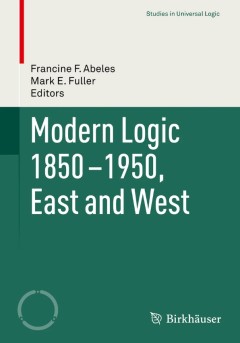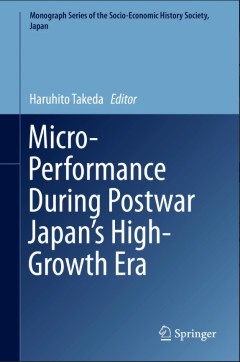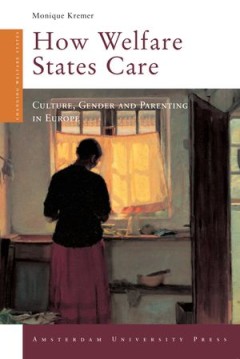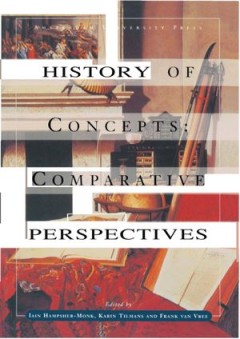Filter by

Money and Finance in Central Europe during the Later Middle Ages
The wealth of the Central European archives, particularly in urban records, has not been fully realised by Western European historians. However, the records are not always straightforward to use and many studies tackle the methodological problems inherent in gathering and analysing medieval sources. This book presents an original review of past and present research of national historiographies …
- Edition
- 1
- ISBN/ISSN
- 978-1-137-46022-6
- Collation
- XVIII, 269
- Series Title
- Palgrave Studies in the History of Finance
- Call Number
- -

Models of the History of Philosophy:Vol. III: The Second Enlightenment and th…
This is the third volume of Models of the History of Philosophy, a collaborative work on the history of the history of philosophy dating from the Renaissance to the end of the nineteenth century. The volume covers a decisive period in the history of modern thought, from Voltaire and the great “Encyclopédie” of Diderot and d'Alembert to the age of Kant, i.e. from the histoire de l'esprit hu…
- Edition
- 1
- ISBN/ISSN
- 978-94-017-9965-2
- Collation
- XXXII, 1000
- Series Title
- International Archives of the History of Ideas Archives internationales d'histoire des idées
- Call Number
- -

The Sense of Things
This book proposes a new interpretative key for reading and overcoming the binary of idealism and realism. It takes as its central issue for exploration the way in which human consciousness unfolds, i.e., through the relationship between the I and the world—a field of phenomenological investigation that cannot and must not remain closed within the limits of its own disciplinary borders. The b…
- Edition
- -
- ISBN/ISSN
- 978-3-319-15395-7
- Collation
- -
- Series Title
- -
- Call Number
- -

Migration in the Southern Balkans
This open access book collects ten essays that look at intra-regional migration in the Southern Balkans from the late Ottoman period to the present. It examines forced as well as voluntary migrations and places these movements within their historical context, including ethnic cleansing, population exchanges, and demographic engineering in the service of nation-building as well as more recent la…
- Edition
- 1
- ISBN/ISSN
- 978-3-319-13718-6
- Collation
- XI, 211
- Series Title
- IMISCOE Research Series
- Call Number
- -

Gardens, Knowledge and the Sciences in the Early Modern Period
This volume focuses on the outstanding contributions made by botany and the mathematical sciences to the genesis and development of early modern garden art and garden culture. The many facets of the mathematical sciences and botany point to the increasingly “scientific” approach that was being adopted in and applied to garden art and garden culture in the early modern period. This developme…
- Edition
- -
- ISBN/ISSN
- 978-3-319-26340-3
- Collation
- -
- Series Title
- -
- Call Number
- 580

Modern Logic 1850-1950, East and West
“Modern Logic, 1850–1950, East and West is a memorial volume for the respected historian of logic Irving H. Anellis … . an excellent job identifying the distinctive features of this work in accessible terms and is able to reflect on its historical importance and broader social context from firsthand experience. … an excellent starting point for any historical study of this avenue of mat…
- Edition
- 1
- ISBN/ISSN
- 978-3-319-24754-0
- Collation
- XIII, 258
- Series Title
- Studies in Universal Logic
- Call Number
- -

Micro-Performance During Postwar Japan’s High-Growth Era
The aim of this book is to analyze Japan's high-growth economy, in particular to clarify the kinds of changes in people’s lives that were generated by high growth. The present volume focuses not on the macro-economic mechanisms that expanded the scale of the economy, but on the micro-economic changes that were effected in everyday life. The emergence of a mass consumption society as a result …
- Edition
- 1
- ISBN/ISSN
- 978-981-10-0708-8
- Collation
- XII, 160
- Series Title
- Monograph Series of the Socio-Economic History Society, Japan
- Call Number
- -

Electrochemistry in a Divided World Innovations in Eastern Europe in the 20t…
In this collection of interrelated essays, the authors review landmark developments in electrochemistry building on biographic material and personal insight. The book facilitates understanding of the innate pathways of developments in electrochemical science as a result of lucky circumstances fitting to objective conditions. Thus the book will help to understand the present state of electrochem…
- Edition
- 1
- ISBN/ISSN
- 978-3-319-21221-0
- Collation
- 193 b/w illustrations, 74 illustrations in colour
- Series Title
- -
- Call Number
- -

How Welfare States Care
A social revolution has taken place in Europe. Women's employment patterns changed drastically the last decades. But they are still different across Europe. Welfare state scholars often presume that diversity and change in women's employment across Europe is based on financial (dis) incentive structures embedded in welfare states. This book shows, by in depth analyses of women's (and men's) emp…
- Edition
- -
- ISBN/ISSN
- 9789053569757
- Collation
- -
- Series Title
- -
- Call Number
- -

History of Concepts
Although vastly influential in German-speaking Europe, conceptual history (Begriffsgeschichte) has until now received little attention in English. This genre of intellectual history differs from both the French history of mentalités and the Anglophone history of discourses by positing the concept - the key occupier of significant syntactical space - as the object of historical investigation. C…
- Edition
- -
- ISBN/ISSN
- 9789053563069
- Collation
- -
- Series Title
- -
- Call Number
- -
 Computer Science, Information & General Works
Computer Science, Information & General Works  Philosophy & Psychology
Philosophy & Psychology  Religion
Religion  Social Sciences
Social Sciences  Language
Language  Pure Science
Pure Science  Applied Sciences
Applied Sciences  Art & Recreation
Art & Recreation  Literature
Literature  History & Geography
History & Geography